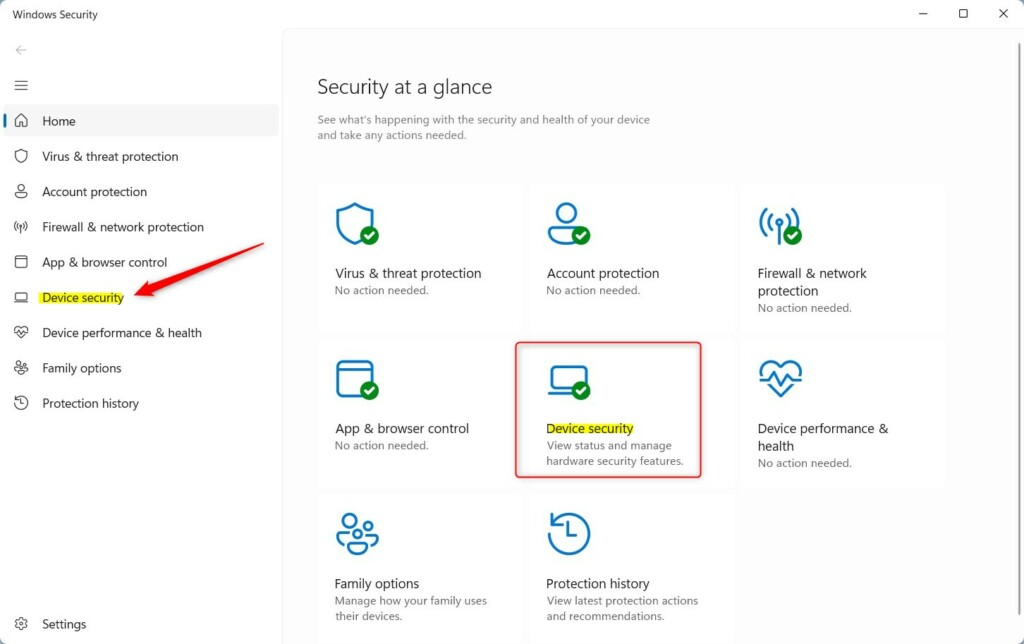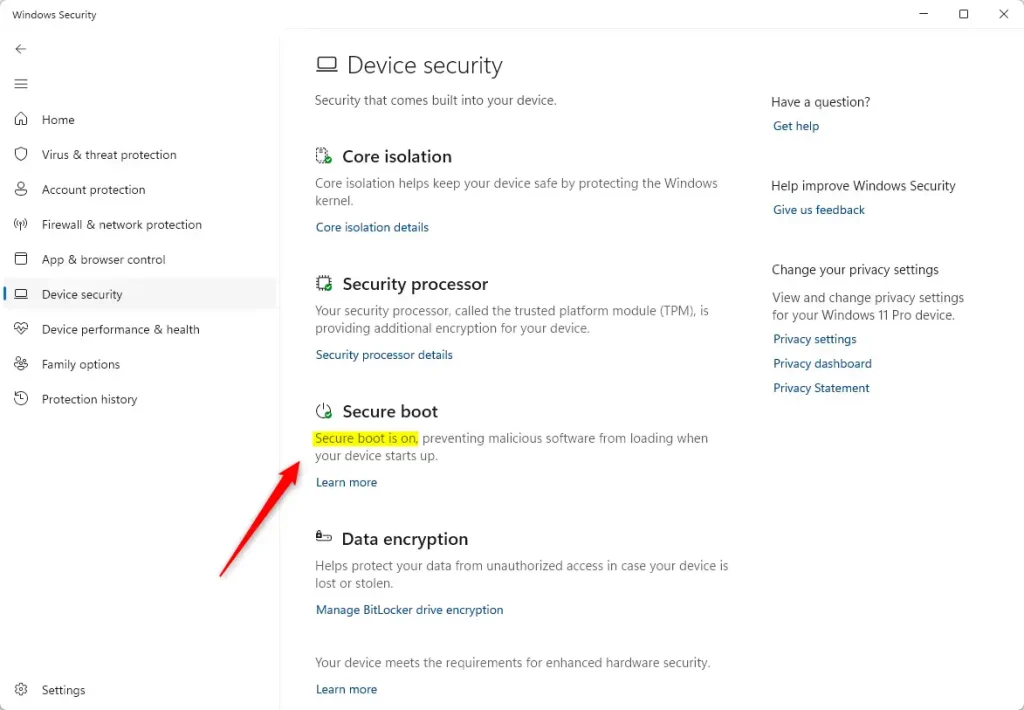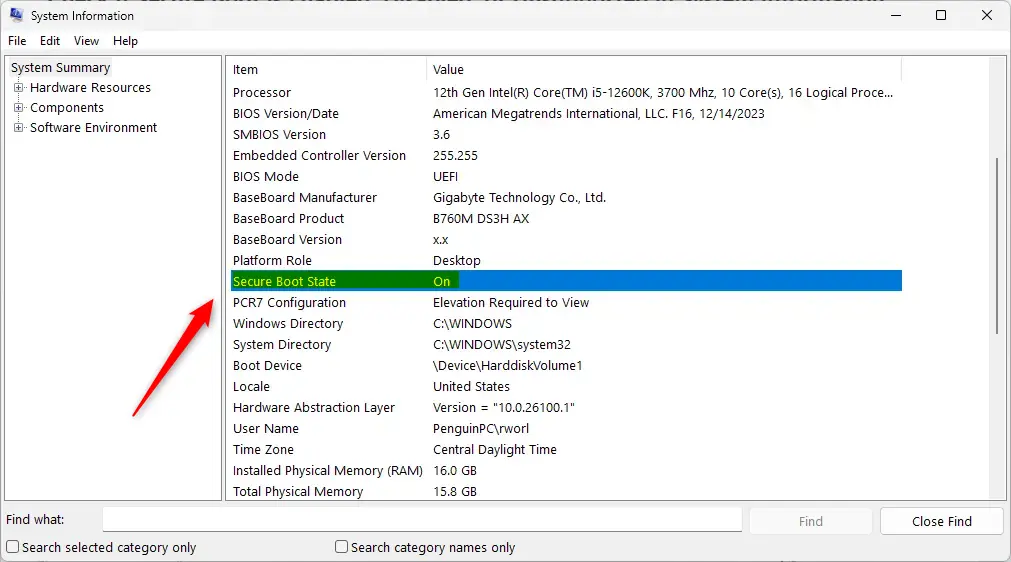This article explains how to check if your device’s “Secure Boot” is enabled, disabled, or not supported on Windows 11.
Secure Boot is a Windows feature that helps ensure your PC boots use only trusted firmware and drivers. When enabled, it prevents software from being loaded without a trusted digital signature, which can protect your PC from malware and other security threats.
Secure Boot is one of the requirements that must be met before you can install Windows 11.
Follow the steps below to verify your device’s “Secure Boot” status. In some cases, even if the feature is enabled in the device’s UEFI/BIOS firmware, Windows may not recognize it.
You may use other troubleshooting steps to enable it in Windows.
Learn how to check the Secure Boot status on Windows
Users can use multiple tools to check their device’s “Secure Boot” status on Windows as described.
Here’s how to do it.
One way to check a device’s Secure Boot status is to use the Windows Security app.
Open the app and select the “Device security” tile.

If Secure Boot is available on the device, it will appear On or Off.

Another way to check a device’s Secure Boot status is to use the System Information tool.
First, press Windows + R to open the Run dialog, type ‘msinfo32‘, and press Enter.
When that tool opens, look for ‘BIOS Mode‘ and ‘Secure Boot State‘ in the System Summary. If ‘BIOS Mode’ is UEFI and ‘Secure Boot State‘ is On, then Secure Boot is enabled.

Finally, open the Windows Terminal app as administrator.
Then, run the command below to check a device’s Secure Boot status.
Confirm-SecureBootUEFI
The command should return a True or False.
If Secure Boot is unavailable on the device, it will present an error message stating, “Cmdlet not supported on this platform.”
That should do it!
Conclusion:
In conclusion, checking the Secure Boot status on a Windows device is crucial for ensuring the security and integrity of the operating system. Following the steps outlined in this article, you can verify whether Secure Boot is enabled, disabled, or not supported, thereby bolstering your PC’s defenses against potential security threats. Here are the key points to remember:
- Secure Boot is a vital feature that helps guarantee that your PC boots using only trusted firmware and drivers.
- Verifying Secure Boot status is a prerequisite for installing Windows 11, ensuring compatibility and security.
- You can check your device’s Secure Boot status using the Windows Security app, System Information tool, and Windows Terminal.
- The availability of Secure Boot can be indicated as On or Off in the Windows Security app.
- In the System Information tool, look for ‘BIOS Mode’ as UEFI and ‘Secure Boot State’ as On to confirm Secure Boot status.
- Running the command ‘Confirm-SecureBootUEFI’ in Windows Terminal can provide a True or False result regarding Secure Boot status.
By confirming the Secure Boot status on your Windows device, you can enhance its resilience against unauthorized software and malicious attacks, ultimately contributing to a more secure computing environment. If you encounter discrepancies or require additional information, please engage via the comments below.

Leave a Reply